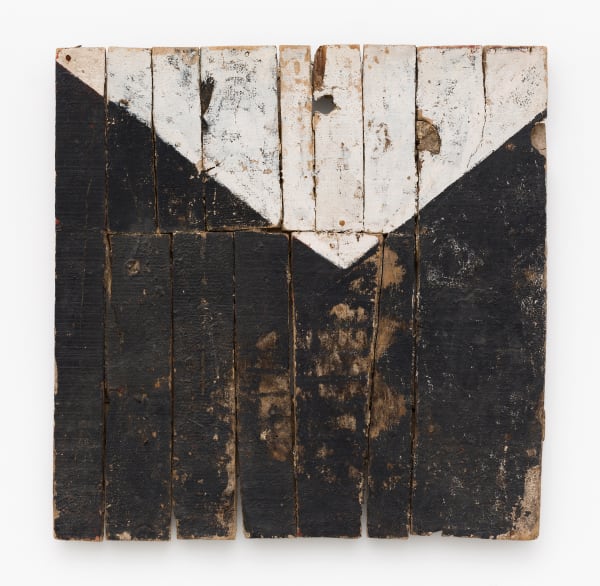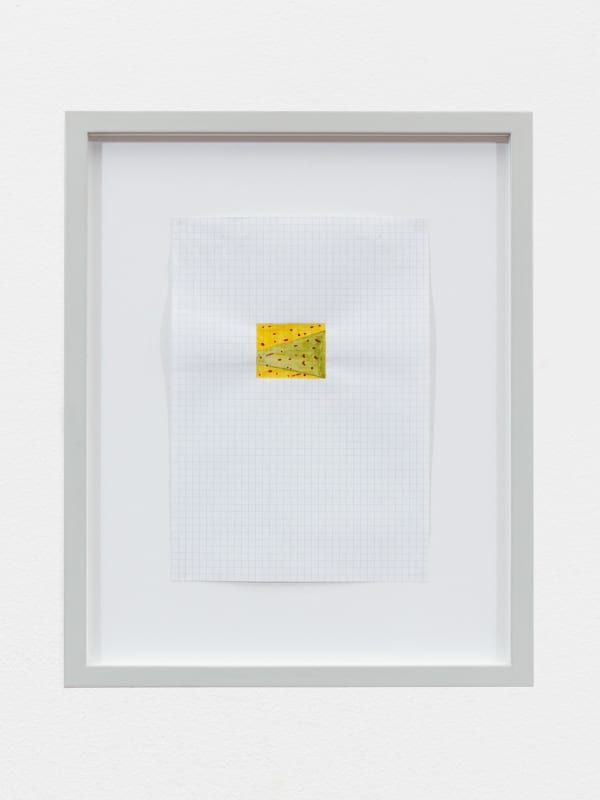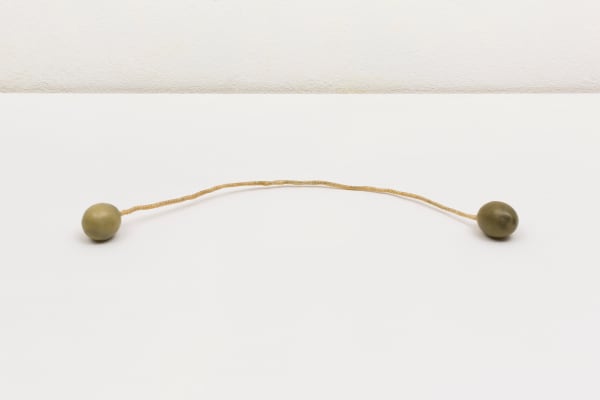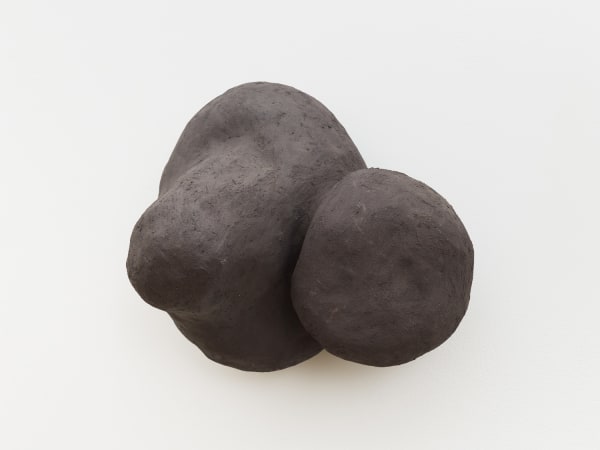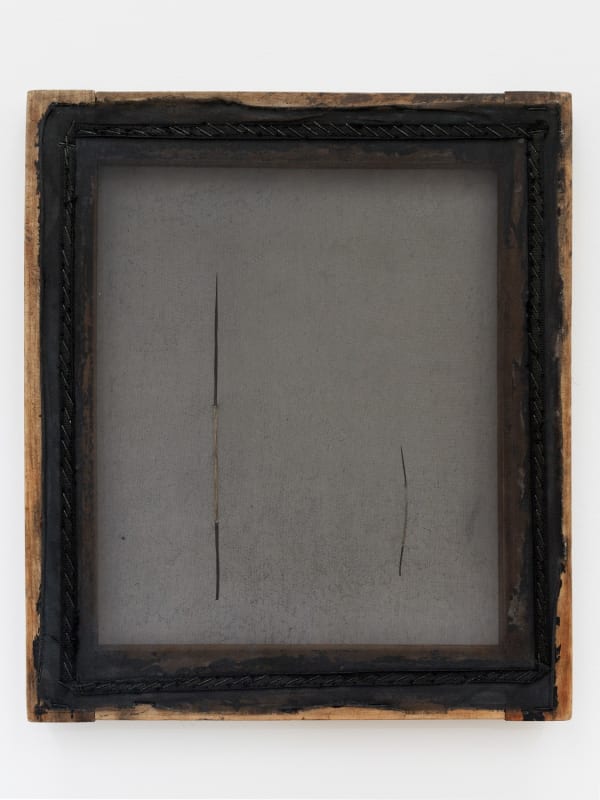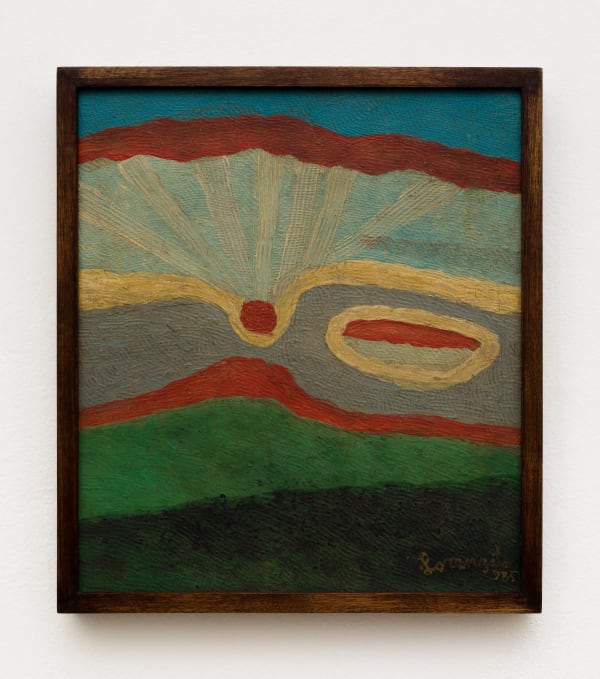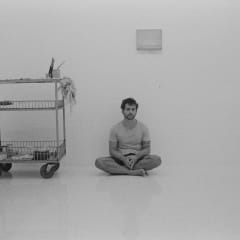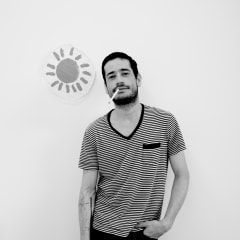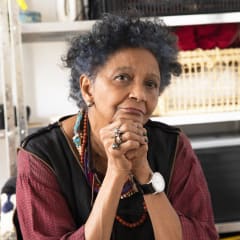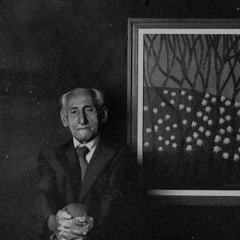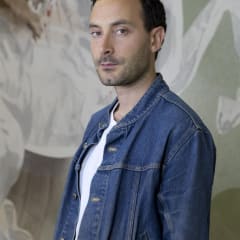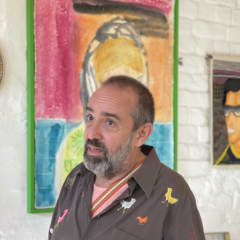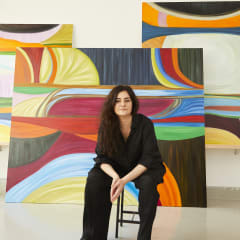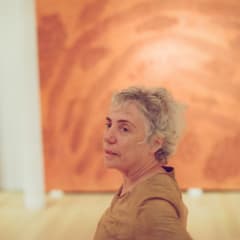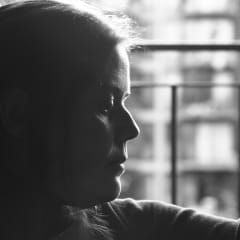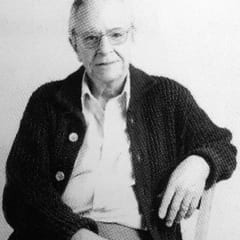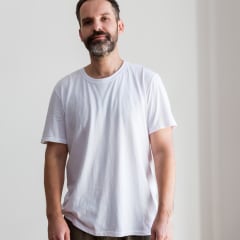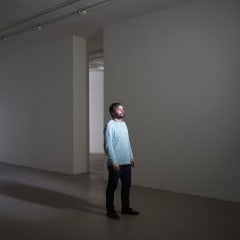EnormousBalls Group Show
Adriano Costa, Fernando Marques Penteado, Sonia Gomes, Paulo Nazareth, Michael Dean, Celso Renato, Amadeo Luciano Lorenzato, Kishio Suga, Solange Pessoa, Paloma Bosquê, Marina Perez Simão, Lucas Arruda, Daniel Steegmann Mangrané, Letícia Ramos, Iulia Nistor, Nina Canell, Matthew Lutz-Kinoy, Luiz Roque and Patricia Leite.
The art world and the world at large are reckoning with the recent tumultuous and historic events of the past few weeks. Marginalized people and communities around the world are fighting back hard against systemic racism, societal oppression and police brutality. As many of us are questioning ourselves both collectively and individually, about our attitudes and about the society that we live in, we cannot but admire the deep courage and conviction that it takes to have your voice heard.
Ever since its inception, Mendes Wood DM has been a platform for radical, engaged artists, many of whom are from minority backgrounds or exist somewhere on the boundaries of mainstream society. As a gallery we are always striving to amplify these artists’ voices as they provoke us and inspire important reflections about the fabric of society, about the way we are. Some show humor in the face of adversity, while others make more direct statements about the environment or against oppression. Through formal and conceptual practices, they all, in their own way, go against the grain, challenging us to look at the status quo through their own lenses.
Taking as a starting point the idea of courage, both artistic and political, the show takes its name from a work by Adriano Costa titled EnormousBalls (2016), a tongue-in-cheek sculpture that asks us quite literally to reconsider the power of language, in this case the sexist implication that courage is somehow linked with masculinity. Costa’s work, which is often provocatively titled, is well-known for its humorous but profound questioning of societal norms, race, gender roles and sexuality, often flirting around the tensions and stigma in the gay community. Artists such as Costa, along with others who feature in this exhibition, are asking difficult questions and putting their beliefs on the line.
Fernando Marques Penteado has been making work throughout his career that speaks powerfully about gender roles, not only in its content but also in the use of embroidery as a medium once traditionally thought of as “feminine”.
Sonia Gomes’ poetic sculptures and installations of variously interwoven fabrics, which are now shown at leading Biennials and museums worldwide, speak of a lifetime spent living in the shadow of racism and sexism, as a self-taught black artist from Brazil. In the same vein, but using a completely different vernacular, Paulo Nazareth is also an artist whose work is driven by his own experience of racism in Brazil and the effects of colonization and oppression on people of color around the world.
Michael Dean’s large sculpture LOL (Working Title) (2018), which was part of the artist’s solo exhibition at the BALTIC Centre for Contemporary Art, Gateshead, in the same year, formally incorporates everyday goods such as milk cartons and is a commentary on British minimum wage. As this year’s pandemic has caused unemployment to skyrocket in so many countries, disproportionately affecting marginalized communities, discussions about wages and the rich/poor divide are more urgent now than ever before.
Celso Renato and Amadeo Luciano Lorenzato were almost contemporaries, born in the early 20th century. Despite coming from different backgrounds, both became self-taught artists, developing their own style and language, boldly working outside of any traditional artistic current at a time when the dominant cultural infrastructure and outlook was almost entirely European and North American. For both artists, success came too late, if at all – Renato only received the recognition he deserved in the last decade of his life, while Lorenzato remained unknown outside of Brazil until after his death. Meanwhile, Kishio Suga, another historic artist who we work with, made an indelible mark on art history by laying the groundworks for what became known as the Mono-Ha movement, one of the most radical art movements of the 20th century, as revolutionary as Arte Povera and still as powerful today as it was when it first shocked audiences in the 1960s and 1970s.
Solange Pessoa and Paloma Bosquê, though belonging to different generations and having very different practices to one another, have both made radical choices and in a sense “politicized” their use of materials, opting to go against the idea of what is traditionally thought of as “fine art”. Existing for years on the margins of the art system, at a time when few understood her, Pessoa’s boldest works have incorporated anything from blood and entrails to bone and earth, rocks, natural pigment and chicken feathers, in a poetic and visceral attempt to reconnect the human species to the planet as a whole and to the ground to which we will all eventually return. Bosquê meanwhile creates poetic and radical arrangements with the most unlikely components, including brass, felt, bronze, coal, gum rosin, bee’s wax, beef casing, craft paper, coffee sieves and wool. Marina Perez Simão, meanwhile, paints abstract compositions onto her canvases. Traditionally the domain of male artists, women who painted in this vein are starting to receive the credit they deserve, though many still posthumously.
At a time in which social actions and protests are coming to the fore, many artists, including Lucas Arruda, are making works that position introspection as an equally important part of the equation. Arruda’s work takes refuge in meditative, almost spiritual interior landscapes as a source of inspiration and artistic freedom.
Introspection and environmentalism find themselves at the center of Adriano Costa’s site-specific installation of his work New Contemporaries - tea time (2015) – a wall full of white t-shirts, each one with the word “Ayahuasca” printed differently on it. The work is both a commentary on the white Western world’s commodification of profoundly important indigenous spiritual rituals, and also a heartbreaking lament against the destruction of the same indigenous regions in South America at the hands of governments and corporations.
Daniel Steegmann Mangrané’s work is based around a challenging dialogue between mathematics and nature, and the pervasive overtone of much of this work is environmental. As a passionate and concerned environmentalist, his work at times confronts us with the beauty of the natural world, and at times holds a mirror up to society, forcing us to think about the damage our species is doing to the planet.
As global events have precipitated even further the often dissonant voices in media, causing so many of us to question the veracity of the narratives that we are fed, artists such as Letícia Ramos and Iulia Nistor are taking similar conceptual approaches to their work. Through meticulous and often wildly idiosyncratic photographic techniques, Ramos subverts photography’s original role as a mirror of truth and reality to ask whether the narratives she presents are real or fake, or somewhere in between. Nistor, on the other hand, makes work that visually revels in bringing the background, that which is hidden, to the surface, exposing things that we might not see at first. Nina Canell’s sculptures also talk about revealing things we don’t see or might not necessarily think about, such as her sculptures made from the same subterranean cables that power the Wi-Fi, and consequently the social media platforms, that are having such an impact on global events today, for better and for worse.
Matthew Lutz-Kinoy’s playful, colorful and irreverent works are densely layered with references to gender and sexuality, as well as historical references and research that often focus on radical countercultural figures that somehow managed to carve out identities for themselves at a time when that would have normally been impossible, such as Madame de Pompadour, Louis XV's royal mistress, political advisor, and influential art patron in her own right.
Luiz Roque’s video Zero (2019) is a surreal narrative in which a private jet flies over what looks like a post-apocalyptic desert landscape and over an eerily quiet Dubai skyline. There is nobody in sight, not even a pilot on the plane, only a dog that wakes up alone on the plush leather passengers’ seat. As pulsating music reaches a crescendo, we wonder if the plane will ever land, or whether that is all that remains of the world, a single private jet, a vestige of former wealth and power, with nobody on the ground left to look up at it.
Countering this feeling of hopelessness and anxiety is Patricia Leite’s practice, which shows us that there is still light at the end of the tunnel, a welcome antidote that so many of us are searching for right now. Through her meticulous practice of layering as she paints vast expanses of earth, sky and sea, she shows us how the brightest lights can be strong enough to permeate through even the darkest of nightscapes, despite what we may think.
-
 Solange Pessoa, Untitled, from Dionísias series, 2017
Solange Pessoa, Untitled, from Dionísias series, 2017 -
 Solange Pessoa, Untitled, 2017
Solange Pessoa, Untitled, 2017 -
 Solange Pessoa, Untitled, 2013 - 2017
Solange Pessoa, Untitled, 2013 - 2017 -
 Adriano Costa, EnormousBalls, 2016
Adriano Costa, EnormousBalls, 2016 -
 Adriano Costa, AnAarchiologyOFanything/Murano, 2017
Adriano Costa, AnAarchiologyOFanything/Murano, 2017 -
 Sonia Gomes, Eu Me Levanto, from Raiz series, 2018
Sonia Gomes, Eu Me Levanto, from Raiz series, 2018 -
 Lucas Arruda, Untitled (from the Deserto-Modelo series), 2019
Lucas Arruda, Untitled (from the Deserto-Modelo series), 2019 -
 Michael Dean, Untitled, 2011
Michael Dean, Untitled, 2011 -
 Celso Renato, Untitled, dec. 80
Celso Renato, Untitled, dec. 80 -
 Nina Canell, Brief Syllable (Peeled), 2017
Nina Canell, Brief Syllable (Peeled), 2017 -
 Daniel Steegmann Mangrané, Lichtzwang (Bon día), 2001
Daniel Steegmann Mangrané, Lichtzwang (Bon día), 2001 -
 Daniel Steegmann Mangrané, Lichtzwang (book), 2012
Daniel Steegmann Mangrané, Lichtzwang (book), 2012 -
 Daniel Steegmann Mangrané, Ramita Partida, 2016
Daniel Steegmann Mangrané, Ramita Partida, 2016 -
 Daniel Steegmann Mangrané, Ramita Partida, 2016
Daniel Steegmann Mangrané, Ramita Partida, 2016 -
 Paloma Bosquê, Cobra de duas cabeças | Two-headed snake, 2018
Paloma Bosquê, Cobra de duas cabeças | Two-headed snake, 2018 -
 Iulia Nistor, Evidence E2 F/W0 A8, 2020
Iulia Nistor, Evidence E2 F/W0 A8, 2020 -
 Adriano Costa, Novos Contemporâneos / New Contemporaries - tea time, 2015
Adriano Costa, Novos Contemporâneos / New Contemporaries - tea time, 2015 -
 Fernando Marques Penteado, Bumbo 01, from the Armas Christi series, 2012
Fernando Marques Penteado, Bumbo 01, from the Armas Christi series, 2012 -
 Patricia Leite, Fireworks IV, 2016
Patricia Leite, Fireworks IV, 2016 -
 Matthew Lutz-Kinoy, The Source, 2019
Matthew Lutz-Kinoy, The Source, 2019 -
 Kishio Suga, Site of Components, 2013
Kishio Suga, Site of Components, 2013 -
 Sonia Gomes, Untitled, from Pendentes series, 2018
Sonia Gomes, Untitled, from Pendentes series, 2018 -
 Marina Perez Simão, Untitled, 2020
Marina Perez Simão, Untitled, 2020 -
 Solange Pessoa, Floraceas, 2019
Solange Pessoa, Floraceas, 2019 -
 Paloma Bosquê, Espinhos #7 | Thorns #7, 2020
Paloma Bosquê, Espinhos #7 | Thorns #7, 2020 -
 Amadeo Luciano Lorenzato, Untitled, 1985
Amadeo Luciano Lorenzato, Untitled, 1985 -
 Michael Dean, LOL (Working Title), 2018
Michael Dean, LOL (Working Title), 2018 -
 Marina Perez Simão, Untitled, 2020
Marina Perez Simão, Untitled, 2020 -
 Luiz Roque, Zero, 2019
Luiz Roque, Zero, 2019 -
 Adriano Costa, Chuva, 2013
Adriano Costa, Chuva, 2013 -
 Paulo Nazareth, Projeto: Imagens que já existem no mundo [Fidel Castro com João Paulo II na primeira visita de um papa a Cuba depois de décadas e séculos de crueldade católica; Fidel Castro y as medalhas com o presidente Venezuelano Hugo Chavez que quebrou o embargo dos , 2018
Paulo Nazareth, Projeto: Imagens que já existem no mundo [Fidel Castro com João Paulo II na primeira visita de um papa a Cuba depois de décadas e séculos de crueldade católica; Fidel Castro y as medalhas com o presidente Venezuelano Hugo Chavez que quebrou o embargo dos , 2018 -
 Paulo Nazareth, Projeto: Imagens que já existem no mundo [Fidel em 1963 como dirigente soviético Kruscheu em Moscou 7 meses após a crise dos mísseis; Fidel Castro em Havana com Mikhail Gorbatchov, o dirigente soviético que abriu o socialismo - 1989; Fidel Castro julho de, 2018
Paulo Nazareth, Projeto: Imagens que já existem no mundo [Fidel em 1963 como dirigente soviético Kruscheu em Moscou 7 meses após a crise dos mísseis; Fidel Castro em Havana com Mikhail Gorbatchov, o dirigente soviético que abriu o socialismo - 1989; Fidel Castro julho de, 2018 -
 Leticia Ramos, Meteorito I, 2014
Leticia Ramos, Meteorito I, 2014 -
 Adriano Costa, God, 2018
Adriano Costa, God, 2018 -
 Nina Canell, Brief Syllable (Twisted), 2017
Nina Canell, Brief Syllable (Twisted), 2017 -
 Daniel Steegmann Mangrané, Systemic Grid, 2019
Daniel Steegmann Mangrané, Systemic Grid, 2019 -
 Kishio Suga, Progression Toward Extremity, 2015
Kishio Suga, Progression Toward Extremity, 2015









